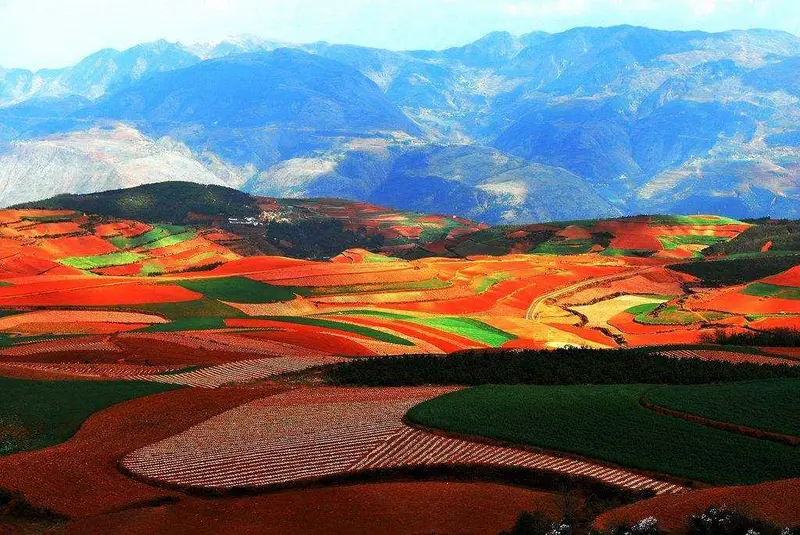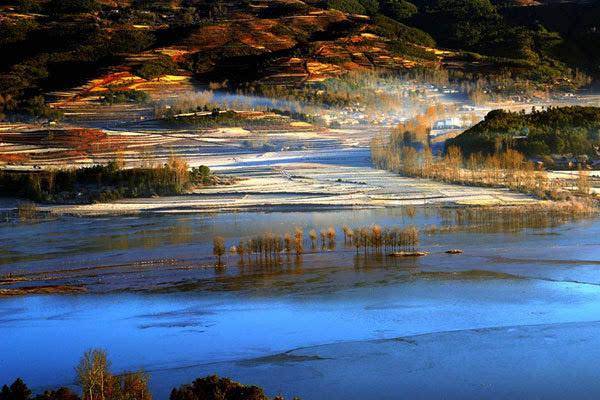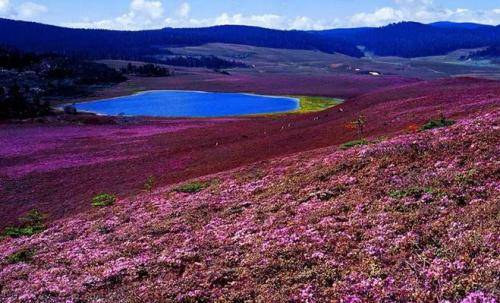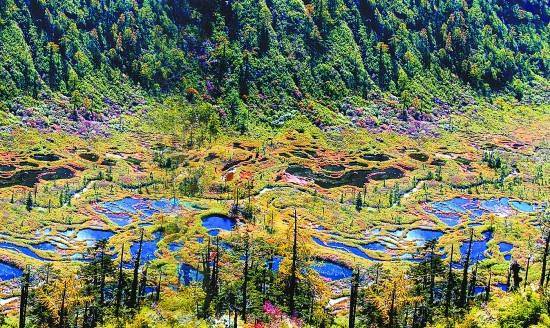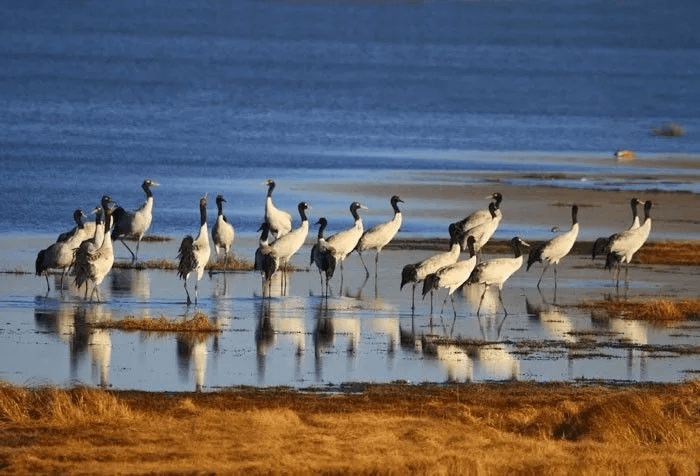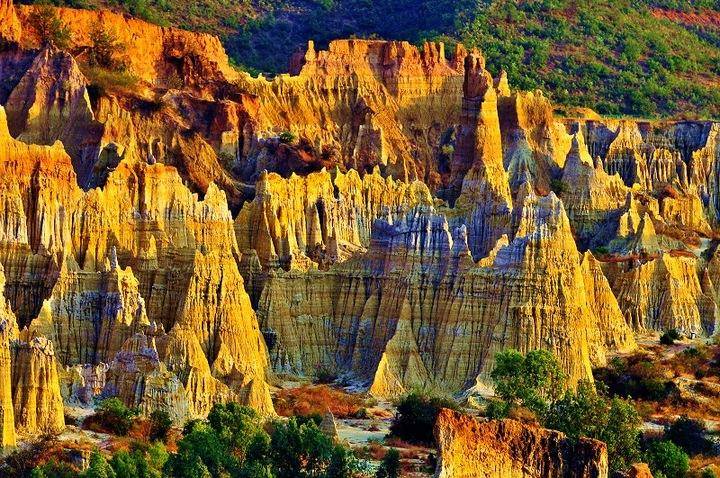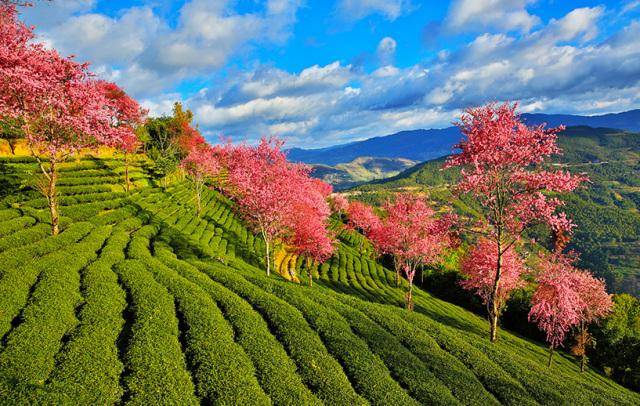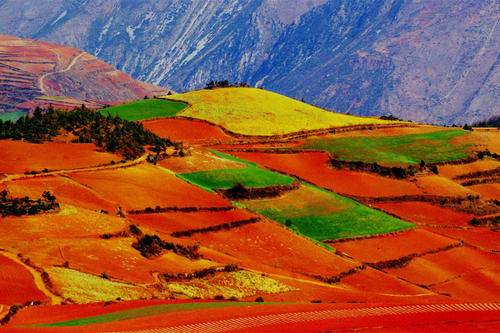Nian Lake (Yuejin Reservoir)
Nian Lake originally had a name with a strong era characteristic, called Yuejin Reservoir. Nian Lake has become the first choice for tourists who come here to photograph black-necked cranes in recent years. The formation of this highland lake has changed the local climate and resource environment, turning it into a wetland over time. The entire Nian Lake is vast with clear water, without dikes or bridges, and filled with the fragrance of grass everywhere. The long reeds on the riverbank grow densely, forming water-like shapes that divide the lake surface. Occasionally, you can hear the 'guga, guga' sound from the depths of the lake, which is the cheer of the black-necked cranes. From November to March of the following year, more than 1,000 national treasure-level rare birds, including black-necked cranes, bar-headed geese, grey cranes, mallards, and nearly 20 other bird species totaling over 30,000 birds, come here to winter, making it an indispensable holy land for winter tourism.
What we refer to as Qianhu are the alpine lake groups that are evenly distributed on mountains above 4000 meters in altitude. The lakes are surrounded by pristine forests, and around June each year, vast expanses of rhododendrons bloom, creating an endless sea of flowers that makes one feel as if they are in a fairy tale world. This undeveloped scenic spot is about 50 kilometers from Shangri-La, but due to the rugged mountain roads, it takes 3-4 hours to reach the most beautiful Bigu Tianchi. The film 'The Promise' was filmed here, and it once drew considerable attention due to environmental damage.
Dulong River
The Dulong River Gorge, due to its unique terrain, landforms, and isolation, has always been shrouded in mystery. Before the road was opened in 1999, locals could only trek over mountains and ridges, taking 2-3 days of continuous walking, day and night. Additionally, every winter, the area would be sealed off by heavy snow for up to half a year, making it a rare secret. The best tourist season is around September each year, just after the rainy season, with less rainfall and no snow at the mountain passes. The vegetation is lush, and the waters of the Dulong River and Pula River are clear (they turn yellow during heavy rains), offering pleasant scenery. During this time, there are fewer poisonous snakes, leeches, and insects, making it very favorable for hikers.
Dashanbao Black-necked Crane Nature Reserve
The best time to visit Dashanbao is from early August to early October during the autumn and winter seasons. The mountains are covered with flowers, oats, and fragrant grasses in layers, creating a colorful and vibrant landscape that transforms the desolate Dashanbao into a dreamlike paradise. In the reservoirs between the two mountains, you can see flocks of black-necked cranes foraging and resting by the lakeside in winter. Dashanbao is known as the 'Little Tibet,' and the vast, undulating fields of cacti alone will make you feel as if you have arrived on the Qinghai-Tibet Plateau.
Yuanmou Earth Forest
Yuanmou, where you can still wear short sleeves in November, is a famous 'little furnace' in the Yunnan region. However, its tourism popularity is not high, with only a small number of photography enthusiasts and naturalists visiting for the Yuanmou Forest and Yuanmou Man. Soil erosion here forms a unique landscape, with large areas affected. The soil columns are generally 8-25 meters high, with the tallest reaching 42.8 meters. The colors of the soil columns are mainly reddish-brown, yellow, and gray, offering a rich palette and diverse shapes. Under the sunlight, they appear draped in golden-red garments, resembling a magnificent palace.
Wuliangshan Cherry Blossom Valley Flavor Garden
Overnight, the Cherry Blossom Valley in Nanjian seemed to appear. If it weren't for a few restless photography enthusiasts who casually posted photos of the Cherry Blossom Valley online, no one would know that this beautiful Cherry Blossom Valley was hidden in the small, remote mountain county of Nanjian. Five years ago, five Taiwanese businessmen bought a tea mountain named 'De'an Tea Plantation' to grow oolong tea and Tieguanyin. To shade these tea trees and add natural floral fragrance to the tea, they planted a batch of winter cherry blossoms in the tea garden, unintentionally creating this unique scenery.
Dongchuan Red Land
Due to the rich content of minerals such as iron oxide, the soil in Dongchuan presents a bright red color. Over an area of more than 20 square kilometers, the entire region is covered with red terraced fields, creating a spectacular sight! The best season for photography in the Red Land is from September to December. Some of the red land is plowed and ready for planting, while some have already been planted with green crops like wheat. At this time, the unique white rapeseed flowers of Yunnan are also in bloom. The rich colors combined with the ever-changing light and shadows of the plateau create a scene that resembles a watercolor painting.
